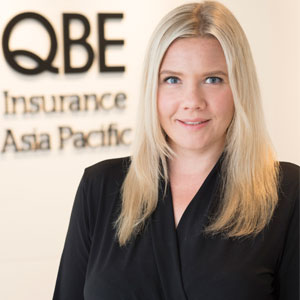THANK YOU FOR SUBSCRIBING

Business Capabilities-Right at the Center of your Insurance Business Operations
Pierre Gagne, and President,


Pierre Gagne,
A business capability is what a company needs to do to execute its business strategy. Another way to think about capabilities is that they are a collection of business functions, processes and technologies that focuses on the achievement of business objectives. Business capabilities are at the center of your organization. They are used to communicate various aspects of your business in order to guide all stakeholders that have a role to play in the value chain. With business capabilities, you can plan, structure, analyze, develop, manage and maintain any organization, processes and technology.
“Business frameworks have become a best practice to model processes, technology and organization”
Using Capability Models to create value
Organizations use capability models in several ways to assist them in focusing on the right things while making strategic decisions, in aligning business goals with investments, and strengthening the communication between business and IT. Once capability models have been integrated into the daily life of organization, they become the reference point for all communications of all types. Business capability maps can substantially accelerate the speed at which organizations perform projects or manage their operations. Industry experience shows that all projects should start by referencing the company's business capability map. The following project examples show how capability models can be used as a leveraging factor:
• Business Investment for Greatest value: As a map to show strengths and weaknesses and helping focusing on where investments need to be done, with the greatest impact on the achievement of strategies.
• Enterprise or Business Architecture: As an enterprise map which can then be overlaid with business strategies, business objectives, processes, application portfolio, technology components, organizational structure, business rules, and business knowledge.
• BPM or Process Improvement: As a list of functional components used to focus on capabilities that require improvement and to start sequencing them into processes, while showing information inputs and outputs including business interdependencies.
• Business/Systems Requirements Definition: As a list of functional components to identify activities, their sequencing, their information needs and the interactions with internal and external stakeholders.
• Application Portfolio Management: Using various systems in the organizations and mapping them on the capability model to identify system duplication, technology needs and project opportunities.
• Operational Risk Management: Using the functional model to identify potential corporate risks and to plan for their mitigation;
• Mergers: As a list of activities against the business capabilities showing the extent of the merger, its scope and the element of change, therefore creating
Build or Buy Capability Models?
Building one's own capability model is expensive and time consuming. Often, the individuals building them do not have the broad knowledge required to represent all facets of an insurance organization. It requires several months of work and utilizes a significant quantity of resources. Organizations that find the process of building their own capability model too lengthy and costly for the perceived benefits can also purchase them from providers. But whether it is internally developed or acquired from a provider, once a capability model is available within an organization, it can then become the reference point for everything.
Use of a capability model enables projects to get started much faster. It permits to identify all aspects that need to be addressed, provides a platform for management to roadmap business and IT investments, identifies business risks that need to be managed, provides organizational components to design solutions, outlines change impacts internally and on the ecosystem — and the list goes on. The insurance industry uses such capability models in various ways. As time goes by, organization will find new opportunities for using them, creating a common language for all levels of the organization.
Capability models introduce greater efficiency and effectiveness either on single projects or at the corporate level. They provide an ROI in the short and long term. But as you include them in your project approaches and your management processes, they will become an extension of your assets, plus knowledge that you will be able to rely on. They provide a much needed bridge between business and IT. They are used for all type of work from creating strategies to defining the business requirements to build or buy systems.
Capability models are the communication backbone which ties organizations together into an overall business architecture framework. As other writers on this subject have put it in the past, capability models are the Rosetta Stone through which the alignment of business and IT can happen. As the Rosetta Stone course teaches the art of communication in other languages, capability models are the language of organizations.
Business frameworks have become a best practice to model processes, technology and organization. Frameworks help visualize the landscape of the current and future states of organizations. Whether they are called capability maps or business architecture frameworks, they are industry reference models that can be used to plan, analyze, develop, manage and maintain. With everything that is happening in the insurance industry and with the never-ending announcements of new technologies and competitors, companies need to define their business directions and how they can differentiate themselves. This is where business frameworks become an asset.
What is an enterprise business architecture framework? It is a representation of an organization’s business composition. It describes the functions at various levels of details, including information structures and the natural dependencies found between functions. Frameworks are used as a map to describe various aspects of organizations. They are the Lego blocks of an industry. Those Lego blocks can then be enhanced and layered with what is specific to each organization. For example, companies may add some of the following perspectives to industry business frameworks to better describe themselves:
o Enterprise ecosystems
o Organizational structures
o Roles and accountabilities
o Processes and procedures
o Geographical map
o Risk assessment heat map
Whether to use an existing business framework or create one is an important question to answer. There are only a handful of comprehensive business frameworks available on the market for the insurance industry. The most known ones are ACORD and Panorama 360. Yet, available industry business frameworks can serve as accelerators for organizations. For management consulting organizations or technology vendors, an existing framework can provide credibility and structure to their offerings.
The true benefits from using industry business frameworks are speed, quality and cost reduction. This is true for defining strategies, planning projects or investments, analyzing situations, developing processes, defining technology requirements and managing organizations.
Frameworks can be used for various situations such as Enterprise or business architecture, BPM or process improvement, Software evaluation, Data warehouse architecture, System integration, Operational risk management, Mergers and acquisitions, New employee training among other. Business frameworks can significantly leverage single projects or organizations. They provide a return on investment in the short and in the long term. They become an asset base for knowledge.
Weekly Brief
I agree We use cookies on this website to enhance your user experience. By clicking any link on this page you are giving your consent for us to set cookies. More info
Read Also
Navigating Compliance Challenges in ESG AML and Digital Onboarding
A Vision for the Future: Automation, Robotics, and the Smart Factory
The Rise of Hyper Automation
Transforming Business Operations with Robotic Process Automation
Combining Automation with AI to Achieve Human-Like Interaction
Implementing RPA - 5 Ultimate Prerequisite
Incorporating the power of recognition into our vendors' sustainability journey
Elevating Guest Experience with Data





















